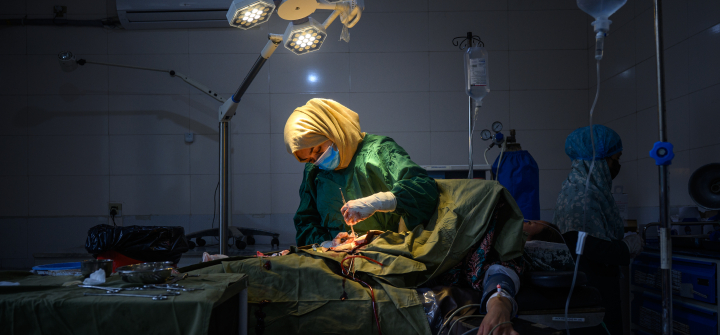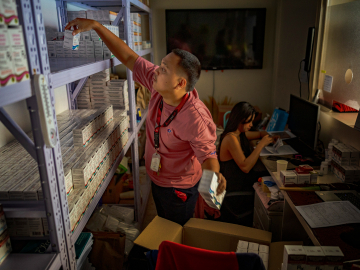Global Surgery: Low-Hanging Fruit for the ‘America First’ Global Health Strategy
The new America First Global Health Strategy makes no mention of global surgery—but it should. Globally, two-thirds of the population lacks access to safe, affordable, and timely surgical care—and the current unmet surgical need is approximately 160 million operations annually.
And yet, with great momentum, LMICs are improving access to lifesaving and disability-preventing surgical care. Lofty as it sounds, global surgery may be the proven cost-effective, lifesaving target that the U.S. Department of State seeks––and an opportunity aid-seeking countries cannot afford to overlook.
How does global surgery compare to historic U.S. foreign aid priorities? Around 16.9 million lives are lost annually to diseases—most of which are noncommunicable—that require surgery. “In 2010, this far surpassed the toll of HIV/AIDS, malaria, and tuberculosis combined—a balance that has likely tipped even further away from these infectious diseases today, as their combined death rate has consistently fallen by 63% over the last two decades.”
The global push to scale up surgical care is well-aligned with the U.S.’s new strategy, which is moving away from fragmented, disease-specific, parallel initiatives, and toward integration into central, sustainable health systems that span across diseases. The new strategy also emphasizes mutual interest and aims to create “bilateral partnerships” that require recipient countries to coinvest, as a bridge to “self-reliance.”
To this end, global surgery is low-hanging fruit. Approximately 30 LMICs have already developed comprehensive, government-driven National Surgical, Obstetric, and Anesthesia Plans (NSOAPs). Their wide adoption should prompt other LMICs to follow suit and position the U.S. to join in at full stride.
The Department of State has pledged to ensure “100% of funding for all frontline commodity purchases and … health care workers” as well as “data systems … to monitor epidemiology … service delivery … and supply chain[s].” National surgical plans detail the costs of achieving these infrastructure, workforce, and information technology goals. The targets are clear, and domestic co-investment even precedes U.S. involvement.
Furthermore, national surgical plans often have built-in monitoring and evaluation metrics that may double as the “performance benchmarks” that the U.S. will begin requiring of their foreign partners.
The new plan appropriately centers on public health while simultaneously building the financial capacity of partner countries. The Department of State challenges China's approach of offering “[high-interest] loans with repayment terms that can create dependency,” and alleges that China conditions its aid on political favors. The U.S. plan, by contrast, should empower local governments to set their own aid priorities rather than earmarking funds for U.S.-driven priorities.
Investing in surgical care would not only demonstrate the U.S. commitment to lifesaving treatment but also appeal to the U.S. priorities of international commerce and public-private engagement.
- The market size of global surgical equipment was projected to be $18.5 billion in 2024, and the U.S. held 45% of the market share.
- Many countries with national surgical plans overlap with regions of U.S. strategic interest by nature of their mineral deposits or positioning within China’s Belt and Road territory (e.g. sub-Saharan Africa and the Indo-Pacific)—presenting the U.S. with an opportunity to compete with China’s rapid industrial expansion.
Investing in surgical care should not minimize historic priorities, such as infectious disease and maternal/child health efforts, as many of these conditions (e.g. Caesarean sections, HIV-associated cancers) ultimately require surgery.
The great Paul Farmer was himself an infectious disease specialist who called global surgery “the neglected stepchild of global health.” He devoted much of his career to improving surgery access because he understood that strengthening the surgical system strengthens the entire health system. And strengthened health systems are the best defense against pandemics—a core pillar of the U.S. plan. COVID-19 made the overlap between disease outbreaks and surgical care abundantly clear, forcing health systems to repurpose surgical infrastructure (e.g. ventilators, surgical intensive care units) and the surgical workforce (e.g. anesthesiologists) to meet the demands of the crisis.
The new strategy offers the U.S. a chance to realign funds toward the greater mortality burden of surgical disease compared to infectious disease. In response, LMIC ministries of health must also ensure that their health care agendas prioritize the higher burden of surgical disease.
Nardeen B. Dawood, MD, is a resident physician in the Department of Surgery at New York University Langone Health and a research fellow at Harvard Medical School’s Program in Global Surgery and Social Change.
Kee B. Park, MD, MPH, is the director of policy and advocacy for Harvard Medical School’s Program in Global Surgery and Social Change.
Join the 50,000+ subscribers in 170+ countries who rely on Global Health NOW summaries and exclusive articles for the latest public health news. Sign up for our free weekday newsletter, and please share the link with friends and colleagues.
Medical doctor and surgeon Bibi Khadija Sadat completes a C-section after assisting another surgeon at the provincial hospital's maternity unit. August 27, 2025, Ghazni, Afghanistan. Elise Blanchard/Getty






